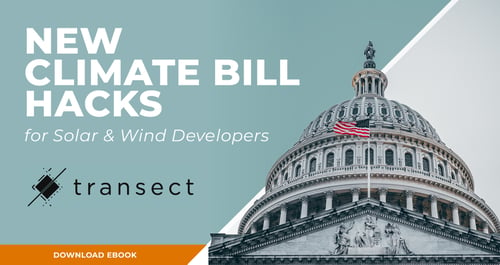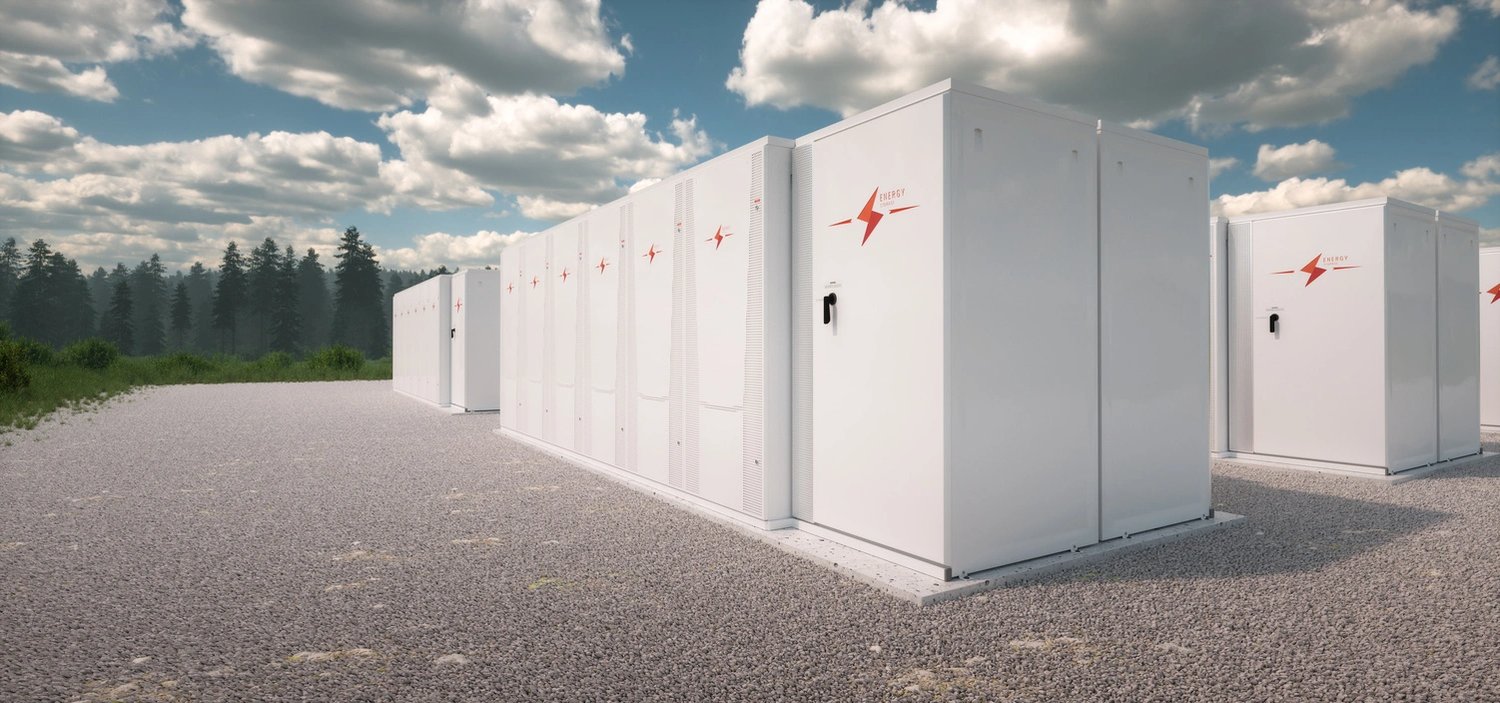.webp)
Listen to the audio version
Every kid over the age of 4 can tell you that flashlights need batteries to work.
(Although … can they? Our kids seem to think flashlights come from phones these days, like everything else. Food for later thought.)
Point is, even little ones understand that energy comes from somewhere. It’s not as easy as generating clean energy and pumping it out into neighborhoods and industry. Sometimes there is more energy generation occurring than we need; other times, we need more than we could possibly create in a day. Add in the complexities of managing the globe’s electric grids, and you have a true challenge on your hands.
Enter batteries. They’re nothing new for storing power grid-scale energy, but applying them to renewable energy technologies is an emerging need we must address today.
So what role do battery storage technologies play in green energy storage, and why should you care? We hope to answer both of those questions today – as well as the question of why children know how to charge devices by the time they’re three years old but still can’t reliably brush their teeth at 10.
#lifeslittlemysteries
What is Battery Storage?
First and foremost, what is battery storage?
In a nutshell, batteries are devices capable of turning electricity into stored energy. When you funnel electrons into a battery, this forces a chemical change through the use of an electrolyte, which enables the formation of chemical compounds that can store energy with those extra electrons. Once you’re ready to use that energy, a different chemical reaction occurs, releasing the electrons, which flow from the battery as electricity.
In either case, charging a battery or discharging it requires an external circuit. Fitting the battery into the circuit enables both processes and the type of circuit dictates which one will occur.
Science, you guys. It’s the freaking best.
It’s a small leap to understand that batteries, while disconnected from that circuit, simply hold those electrons in a kind of chemical stasis, ready to deliver them when needed. In the case of a nickel-metal hydride or lithium-ion batteries, we can recharge at will, completing a clean energy cycle that produces electricity over and over again.
That electricity generation powers your Tesla. It makes your café lights glow on summer evenings. It turns weird milky sludge into delicious pineapple frozen yogurt (a process nearly as mysterious as how children think).
Suffice it to say that given our energy demand, we need that electricity. And we need a whole lot of it.
Enter grid-scale battery projects.
What Services Do Grid-Scale Batteries Provide?
Using batteries on a broad scale is not particularly new technology. Large-scale battery energy storage systems (BESS) have enabled utilities and power system operators to store excess energy from the grid for decades, collecting it when it’s not required through the means described above. Then, when electricity demand peaks or is extended for a long duration, it can discharge where needed.
Lithium-ion battery technology has gotten significantly cheaper in the last several years, making it the frontrunner for grid-scale battery storage systems. However, there are several others that work well, including:
- Lead-acid
- Redox flow
- Molten salt
The last kind of sounds like a supervillain’s weapon from an Arnold Schwarzenegger movie, but we promise it’s actually a thing. Each of these types has its pros and cons, but they share the ability to make grid systems more flexible than they would otherwise be.
Grid-scale batteries also enable income production for utilities. According to the above source, “Arbitrage involves charging the battery when energy prices are low and discharging during more expensive peak hours. For the BESS operator, this practice can provide a source of income by taking advantage of electricity prices that may vary throughout the day.”
Moreover, batteries help to provide enough power during peak times. With the increasing production of renewable energy sources, battery storage facilities can allow our clean energy transition from less-clean sources to lower carbon emissions and climate change.
So, yeah. Batteries are real helpful. But what role do they play in clean energy specifically?
What Role Does Battery Storage Play in Renewable Energy?
It will not shock you to learn that sometimes the wind doesn’t blow. The sun occasionally – and if you’re in Washington State, relentlessly – refuses to shine. We cannot control when renewable resources like solar and wind will “show up,” so we have to be ready whenever they do.
Contrast wind and solar power to natural gas, which we pump out of the ground at a metered rate. Or coal-fired power plants whose speed of production we also control. These energies are dirty as Hades, but they’re also an easier tool to service the grid because we can regulate them. (Don’t even get us started on what some dust can do to photovoltaic solar panels and your desired megawatts of solar energy.)
That, however, is assuming we don’t have the assistance of a utility-scale battery or two. As discussed above, these aren’t new grid-scale technology. And they’re ripe for the facilitation of clean energy, allowing us to store what energy we make when it isn’t needed so that we never waste a single electron from Sol.
Battery storage also helps with the following:
Minimizing Curtailment
Curtailment is a reduction in clean energy production in accordance with transmission and grid capacity to ensure that we don’t overload either. It’s essentially a waste of free energy. However, if we had reliable ways to store excess energy, we could reduce or eliminate curtailment.
The good news is that many grids already have enough storage capacity for clean energy. Now we need to work on interconnection, flexibility, and interconnection. Whether or not energy storage technologies exist (and just as often, it doesn’t), we need to ensure that it is applied to clean energy resources and fossil fuels.
Reducing Energy Costs with Storage Solutions
Suppose we can make as much energy as we need to meet our electricity demand without intentionally reducing output and storing it as long as necessary. In that case, we can also reduce the cost of energy during peak times.
These energy storage projects benefit everyone but are especially important as a social justice issue. Families who can’t always pay for power would have a much better chance of keeping the lights on – and it’s everyone’s responsibility to ensure they can.
Phasing Out Fossil Fuels to Reach Net Zero Carbon Production
President Biden’s energy goals for a clean energy future are pretty burly, but it’s unlikely we’ll achieve them without a way to replace fossil fuel plants. And until we can store clean energy on a broad scale, we’ll have a hard time doing that.
Why? Because fossil fuels currently provide an exceptional service, chipping in whenever reliable, steady energy supplies are needed to meet high demand. People need power, and rolling blackouts are never appreciated.
Just ask California.
Only once we can meet peak demands without coal and gas will we be able to hit those carbon-free targets. In other words, we need to pair large-scale battery storage with clean energy because one can’t see true success without the other. To wit:
- Batteries will never achieve their true potential while they’re forced to store nonrenewable energies that will eventually run out … if our planet doesn’t kick the bucket first.
- We can’t fully unleash solar, wind, hydro, or other clean energy sources if we must routinely curtail them.
In summation, it’s time to ensure we have ready access to BESS today.
Clean Energy Storage Systems FTW
Unfortunately, we never managed to get to the issue of why kids just don’t. brush. their. teeth.
We learned lots of other stuff, though – like how batteries work to power electric vehicles and cities alike, what they do for us, and why we desperately need to increase their capacity to hold renewable power. Today, they’re poised to enable the revolution that President Biden and others around the world are furiously codifying … we just need to put those battery storage projects to work.


